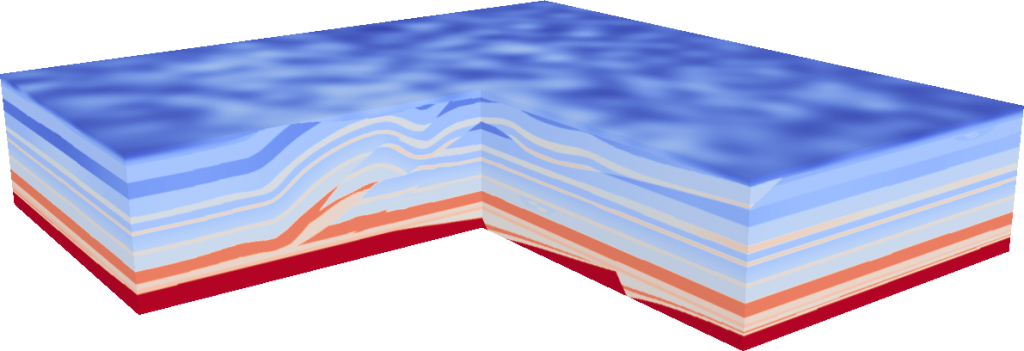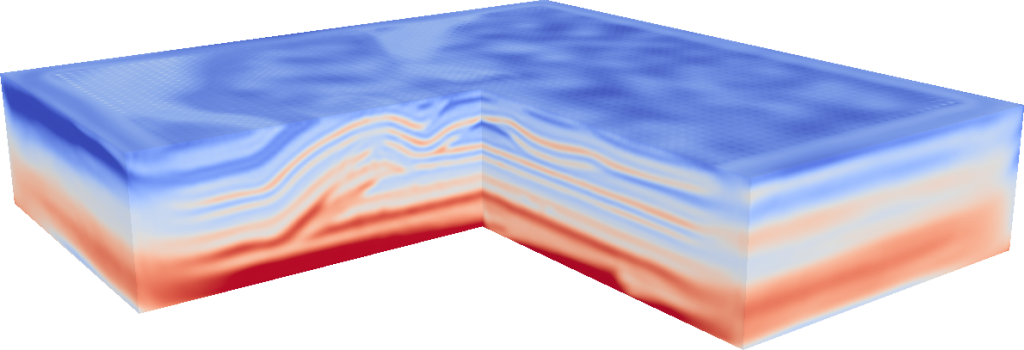Domain: Geophysical Exploration
Lead Participants: Barcellona Supercomputing Center
The most promising geophysical imaging tool nowadays is Full Waveform Inversion or FWI. Potentially, FWI can retrieve physical parameters for a whole 3D subsurface volume directly from the seismic data. However, the tool has its limitations, as are the necessity of specially acquired data (low-frequency, long-offset), good initial models and huge computational demands. In our tool, the FWI tool has inherited the efficient implementation of the algorithmically similar RTM and boosted its capabilities in order to turn this very costly imaging algorithm into a commodity.
Efficient 3D Inversion
Obtaining high-quality 3D models with FWI is a desirable goal that requires clever strategies to make it work seamlessly. Our FWI package includes:
- Multi-scale approach, regridding the model at each frequency band for optimal efficiency
- Capacity to succeed even with poor initial models
- Multi-shooting, allowing the inversion of many shots simultaneously with minimal cross-talk
- Highly efficient wave propagation engines, for short turnaround times
The resulting models are of very high quality even at deep sections, while the computing costs are not too different from those required for other high-end imaging applications (e.g. RTM). Together with accelerated kernels running on advanced HPC platforms, our tool is mature and ready to reduce uncertainty in seismic exploration surveys today.


More Than A Recipe
The optimal outcome of FWI tools depends on the data quality but also on its treatment and on the detailed algorithms used for its processing. Our tool incorporates novel preconditioning, data compression and workflow control ideas that make its approach unique and result in very high-resolution 3D subsurface models. Constant development both in modeling algorithms and code optimization keep pushing forward the capabilities and performance of the FWI package towards the next frontiers: anisotropy, elastic inversion and multiple geophysical data, or joint, inversion.
